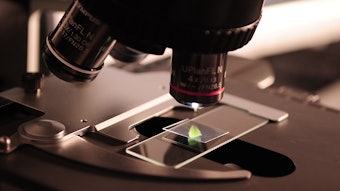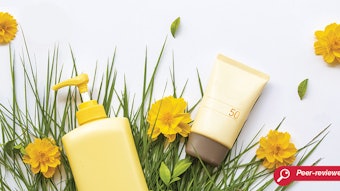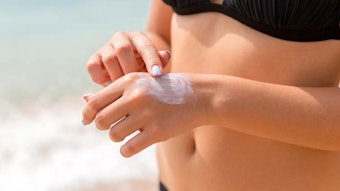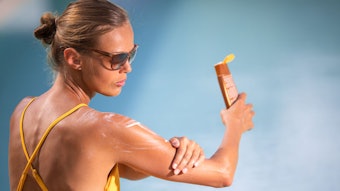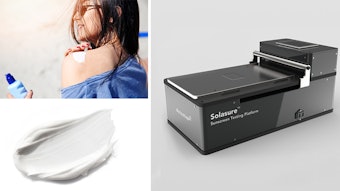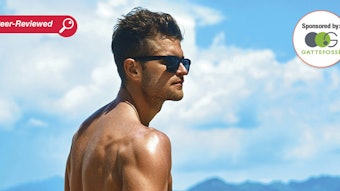Consumers have witnessed a sun care revolution over the past few decades, with broad-spectrum protection, improved actives and efficacious blends, but an understanding of the mechanisms behind sun protection has grown exponentially thanks to the photobiologists and formulators responsible for such research. Leading the pack has been Gavin Greenoak, managing and scientific director of the Australian Photobiology Testing Facility Pty., Ltd. (APTF). After 25 years in the industry, he continues to strive for a better understanding of the interaction of light and the human body. Greenoak’s career began in cancer research, which has afforded him unique insight of skin biology and the effects of sun exposure.
C&T: Why were you interested in researching cancer?
The relationship between cancer and the human body has always passionately interested me. Nothing gives you cancer; cancer is a relationship between the body and external influences. To understand those influences, such as sunlight and diet, one must understand the context rather than looking for a culprit. People spend a lot of time outside in Australia, and to conduct research that allows them to enjoy outdoor activities in an informed rather than anxious way has always been my objective.
C&T: How did you transition to sunscreen research?
In the 1980s, there was concern that sunscreens themselves might be involved in the high incidence of skin cancer in Australia, so research examined the safety of commonly used UV filter actives [for any long-term negative effects]. The main one we investigated was the UVB absorber 2-ethylhexyl methoxycinnamate, which after a decade of research, was found to [cause no issues of concern].
C&T: What has changed in sunscreen research in the past 25 years?
There is a much better understanding of the effects of long-term sun exposure. Skin cancer can have a latency of 25–30 years. Baby boomers were getting a lot of sun exposure and the results of that exposure were a surprise to people, [i.e., photoaging]. To stall the aging process, the use of sunscreen is an important aspect.
C&T: What has been one of the industry’s biggest challenges?
The biggest challenge I’ve seen as both a scientist and a human being is globalization and the information revolution. [So much information is available to people that it has undermined] their sense of capability to evaluate data. The tendency is to move toward authorities. [Individuals should seek original information] and draw their own conclusions. However, people often do not feel they are competent enough to evaluate the data, so they go to a second level of interpretation, which is a spin on [the original].
C&T: How has this information revolution impacted sunscreens?
I thought PABA was an excellent sunscreen. No one ever used PABA on its own, but suddenly manufacturers were claiming products to be PABA-free, which was based mainly on media interpretation. The industry lost a good active. It is interesting how products can attract bad press and beyond a certain point, there is no way to recover. Also, people still think that above SPF 15, one [gains little] more protection, and this is completely untrue, as the relationship is linear. Misunderstandings like this are difficult to budge once they become entrenched and represent quite a challenge educationally, in terms of sunscreen use. This has also been [further] complicated by the growing understanding that sunlight exposure is necessary to health.
C&T: How has globalization affected the sun care industry?
In Australia, the only people naturally adapted to the high levels of sunlight are the Aboriginals, who have darkly pigmented skin. [In contrast,] there are many people with lightened skin, adapted to Northern hemisphere levels of sunlight. The advent of globalization has created the desire to have global sun care regulations to somehow fit all nations and all people. In Australia, [formulators] tailor actives and objectives to the particular problems of Australia, and this does not fit with the global model.
C&T: What technologies have revolutionized sun care?
The most significant innovation has been the interaction of the inorganic sunscreens titanium dioxide and zinc oxide, and their ability to extend protection across the entire UV spectrum. [However,] they also led to the desire for natural sun care, presenting challenges for formulators.
C&T: What technology has advanced sun care testing?
Sunscreen testing has involved exposing humans to high intensity UV light, and it is difficult to describe this method as anything but barbaric. The in vitro road is the road of the future,[but] it is a huge challenge to come up with an in vitro method that is acceptable. I have every confidence that it will happen, and we have been working on it for years. I would say within a decade, we will not be using human [subjects]. Many other forms of testing [also] currently conducted on human skin will become in vitro.
C&T: What do you consider one of your greatest accomplishments?
Australia had an SPF 15 ceiling that was based on the [previously described] misconception that one does not get much more protection above SPF 15. I fought for the scientific understanding of how sunscreens work. They are like filters, not blocks, and they do not “run out” like batteries. I am proudest of my educational efforts. It is critical for the industry to have the best understanding of the products they are using as much as the consumer. This particular effort is certainly not complete but very important.
C&T: What advice would you give someone starting out in photobiology?
Do your homework. There has to be a background of understanding of the extraordinary complexities of the science of the skin and its responsiveness to external stimuli, including sunlight. I take for granted my passion for understanding the interaction between light and biological systems. Without that passion, understanding this industry is going to be difficult.

